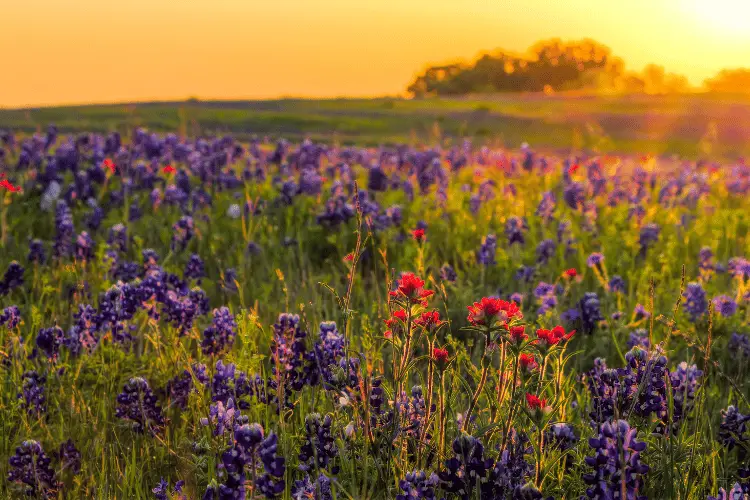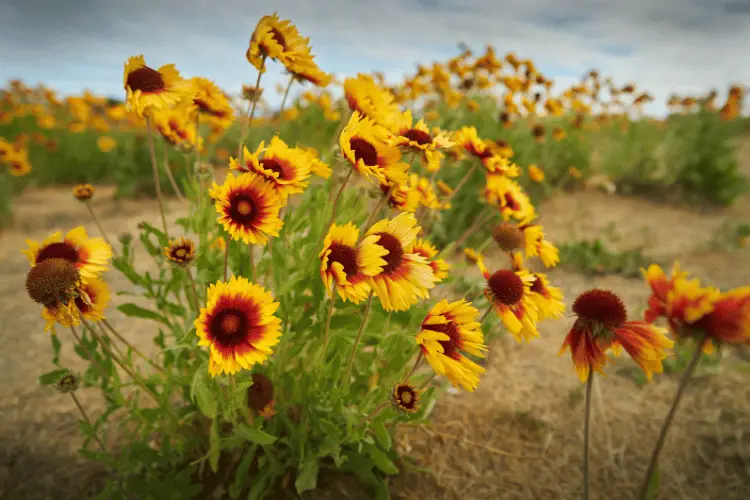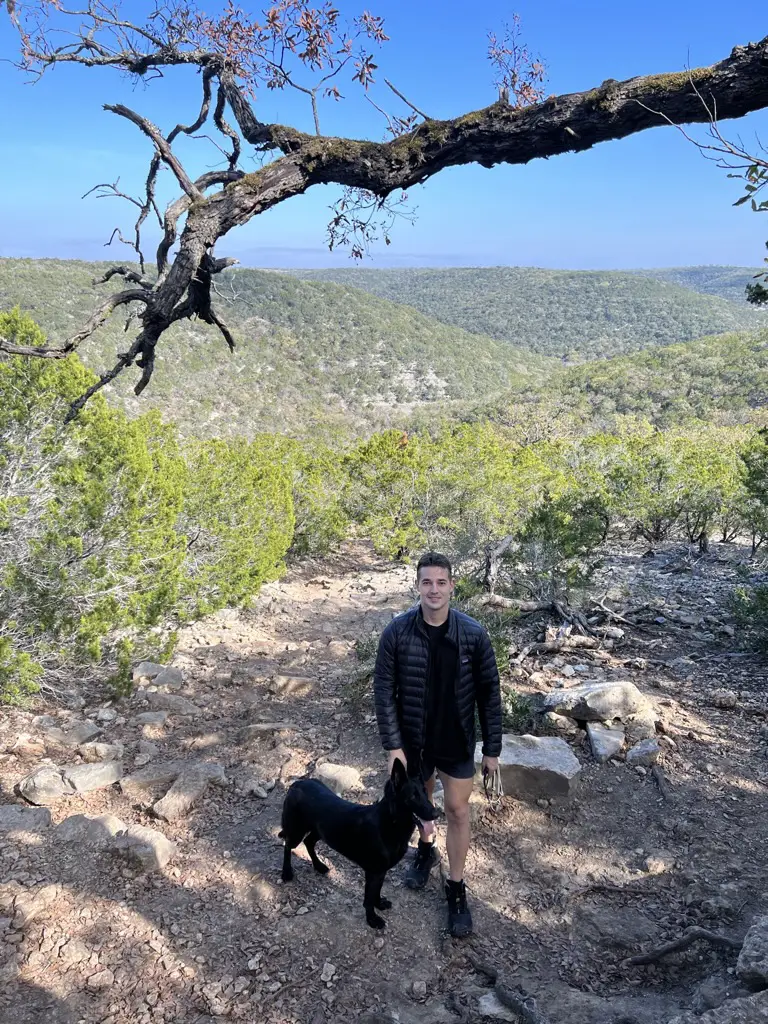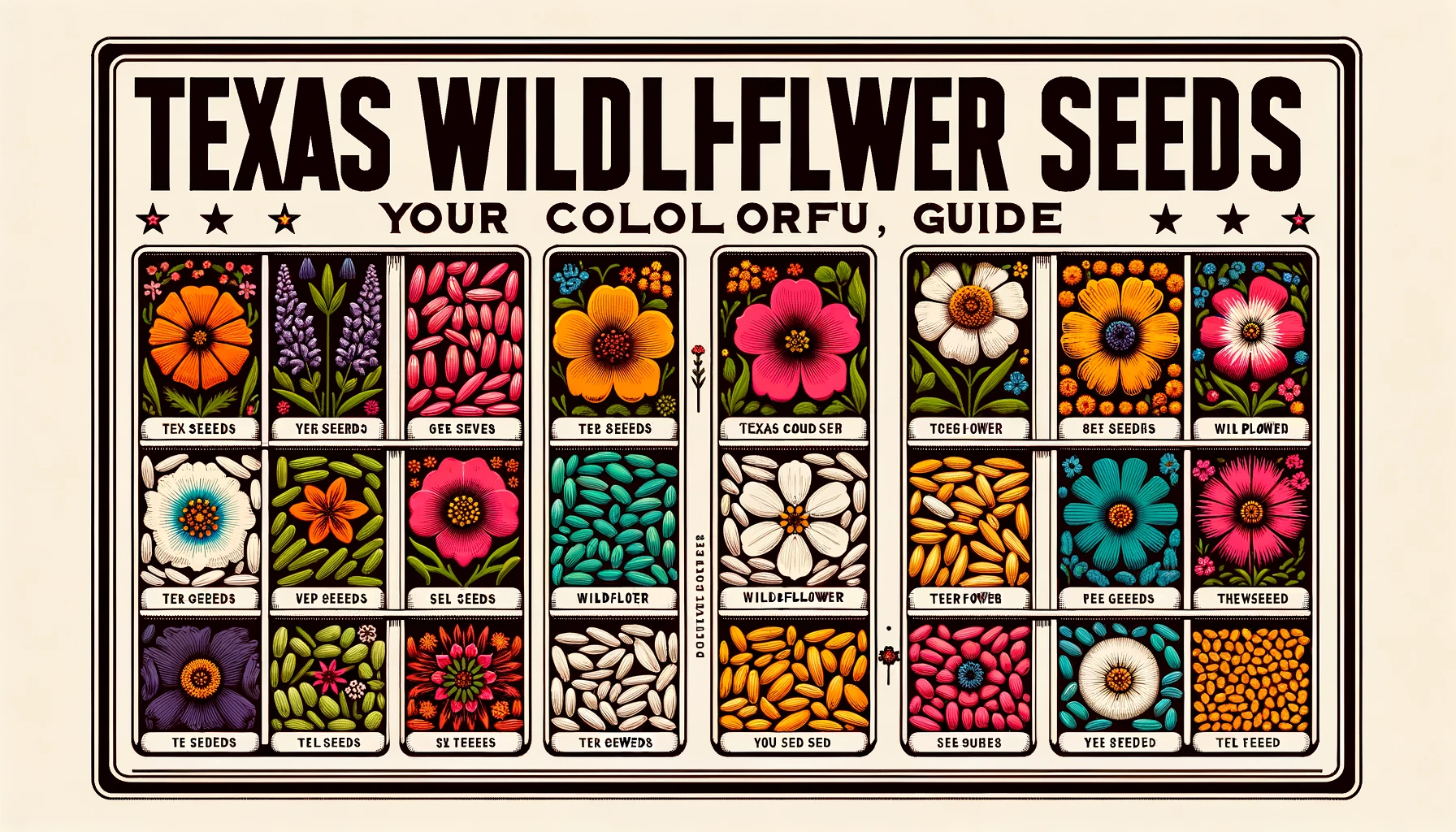We strive to provide you with authoritative, trustworthy, and expert advice. In doing so, the staff at texaswalkabout.com performs extensive research, editing, and fact checking to every post on this webiste. If you feel that this article can improve, please feel free to reach us at staff@texaswalkabout.com
Flowers can be a great way to bring a touch of beauty and color into our lives. However, having a monotonous garden can be tiring. How to fix that, you wonder?
Well, you can add a splash of color with a handful of Texas wildflower seeds!
They’re not like any type of flower; they’re vibrant, hardy, diverse, and can grow just about anywhere, earning them the much-deserved label of being wild.
So, saddle up, partner! We’re going to turn your backyard into a Wild West wonderland with a couple of wildflower seeds!
Let’s start our botanical journey!
Texas Climate
Now, before we get too deep into the Texas wildflower world, you must first learn about Texas’s climate and what it can mean for your garden and seeds.
To start, Texas enjoys warm, clear-skied summers, perfect for growing most wildflowers. The rainy season here is mostly during spring and can last until early fall.
When it comes to winters, they’re mainly mild, with snow being a rare sight in most of the state. Yet, these little characteristics can shift and change a little from the northern part of Texas to the southern, which can affect what wildflowers seeds you can grow.
To illustrate, please have a look at Texas on the USDA zone map. You’ll notice that at the top, it’s colored green, while at its southernmost corner, it’s almost dark orange.
These colors are the different “zones” in the state, each with its own average annual minimum winter temperature.
The map helps gardeners learn what flowers will grow and thrive in which location—just like our wildflower seeds here!
For instance, the Texas bluebonnets are only hardy in USDA zone eight, while plains coreopsis can grow in zones three to eight! So, which Texas wildflower seeds could you grow in your zone? Let’s have a look!
5 Texas Wildflowers and Their USDA Zones
Among the multicolored and diverse world of wildflowers, you’ll find the following ones can thrive in Texas:
1. Bluebonnet
Of course, it wouldn’t make any sense to start talking about flowers without mentioning the state’s own official flower, the bluebonnet.
The bluebonnets, as you can guess, are beautiful blue wildflowers that you can see decorating each side of the road during spring.
Though their actual name is Lupinus Texensis, the bluebonnet got its name from its resemblance to the sunbonnets Texan women wear to protect themselves from the sun.
Bluebonnets usually grow in early spring and thrive in hardiness zone eight. The flowers also tolerate the frost and cluster together during wintertime.
Though this flower is beautiful, we recommend keeping it in the back of your flowerbed, away from kids and pets. This is mainly because bluebonnets are poisonous if ingested by animals and humans alike.
2. Texas Indian Paintbrush
The Texas Indian paintbrush flower takes its name from a beautiful Native American legend. Its story starts with a painter who wanted to capture the sunset’s beauty.
Yet, no matter how hard he tried, the colors didn’t seem to illustrate just how majestic the sunset could be.
So, frustrated with the results of his endeavors, the painter prays to the Great Spirit and asks for help.
Luckily for him, the Great Spirit granted his request and gave him the paintbrushes necessary to finish painting.
After completing his artwork, the painter tossed the paintbrushes where he was painting. From them, the Texas Indian paintbrush grew!
This wildflower blooms in summer and spring in zones 6–11; you may catch one or two throughout the year, though. One thing about Indian paintbrushes that’s important to note is that they’re parasitic.

This isn’t to say they need other plants to grow but to point out that if another plant is too close to this flower, it’ll latch on its roots to enjoy the extra nutrients.
3. Plains Coreopsis
The stories we have for the plains coreopsis vary considerably, as it has a lot of ties with the Native Americans.
For starters, the old stories say that the Natives boiled the flower and concocted a drink that helps with diarrhea and stomaches.
On a completely different note, they also thought if you drink this tea, you’ll be protected from getting hit by lightning!
Regardless of either story, please don’t plant this flower for any DIY medical purposes, as it could be dangerous.
If you’re looking for an easy-to-care-for wildflower, though, the plains coreopsis is still an excellent choice. This flower grows in USDA hardiness zones 3–8 and blooms from June to September.
4. Mexican Hat
As you can probably guess from its name, the Mexican hat flower is a unique-looking one with reddish-brown petals outlined with yellow.
However, its core actually gives it the unique look, which rises about 2 inches above the petals, giving the flower a funny sombrero-like shape!
Back then, Native Americans discovered that if you boil this flower’s leaves, you can make medicine tea to treat snake bites! This medicine can also help reduce poison ivy symptoms.
Mexican hat seeds can grow in USDA zones 4 through 9a and bloom all the way from April to July. Also, this little flower offers an aromatic scent that’s close to anise or licorice!
5. Indian Blanket
Finally, among the most beautiful wildflowers, the Indian blanket is a must-have addition to any garden. Plus, it has a sweet story behind it!
The legend goes that when a tribe chief went to war, his wife was stricken with grief and decided to weave a little blanket for him.
The blanket was made of yellow and red weaves and contained prayer symbols for the Great Spirit to keep her husband safe.
Yet, one day, their daughter got lost in the woods at night and couldn’t return. In the cold of the night, all the girl could pray for was a blanket that could keep her warm.
And so, the Great Spirit answered, and she woke up to find herself wrapped in flowers that held the same color as the blanket her mother wove—red and orange.
These lovely wildflower seeds grow in hardiness zones 2–11 and bloom from May to July, sometimes even later.

What You’ll Need to Plant Texas Wildflower Seeds
So after discovering what those little seeds could offer you, are you interested in planting some? If you’re up for it, here’s what you’ll need to focus on:
1. Drainage and Soil
One thing we know about most flowers is that they hate waterlogged soil. In fact, this is accurate for most plants, as soggy soil can lead to root rot, which can be fatal.
For wildflower seeds to grow, you’ll need a well-drained soil, preferably made with garden loam.
Also, you don’t need to add any fertilizers or compost to the soil, as that might encourage other plants to grow. Wildflowers thrive in low-quality soil and don’t need much help from you to grow.
2. Sun
Most of the native wildflowers that grow in Texas are sun-loving plants that require at least 5–7 hours of direct sunlight daily.
As a result, if you’re trying to grow your wildflower bed in the shade, you’ll need to move it to a sunnier spot.
This isn’t to say that the wildflowers won’t grow at all in the shade, but they may not bloom as well.
3. Water
For the most part, wildflowers depend on rain for their water intake.
However, considering Texas isn’t known for its lengthy rainy season, you might need to water your flowers about once a week, especially if they’re just little seedlings.
4. pH Levels
Most wildflowers tend to thrive at pH levels 5.5–7.0. Of course, this could vary according to the seeds you have.
For instance, Indian blankets love alkaline soils with a pH level that can go up to 8.5! You can buy a testing kit from the nearest gardening store to test your soil’s pH level.
Tips on How to Maintain Texas Wildflowers
Now that you know all about the beautiful Texas wildflowers, it’s time to learn how to care for them. Here’s what you need to know:
1. Monitor the Flowers
While admiring your wildflower bed is a great way to spend your afternoon, you might need to look closer occasionally.
Flowers can communicate so much about their needs without any words!
For instance, If you notice the flowers drooping or not growing, the weather might be too extreme, or something is wrong with the soil.
In this case, you can make a little checklist and follow it to see what’s been affecting your flowers.
2. Deadhead Old Plants
Wildflowers grow and thrive in the wild without any intervention from us. This means you won’t have to prune your wildflower bed constantly.
Nonetheless, you could cut or pinch any old, spent flower heads to help the new blooms grow.
3. Prevent Pests
If there’s one thing that gardeners everywhere can agree on detesting, it’s pests!
These little creatures can wreak havoc on your wildflower bed. To keep them away, you can use horticultural oils or insecticidal soap.
Final Words
So, how do you feel about planting a couple of Texas wildflower seeds? If you’re feeling up to the task, go ahead and get started now!
Texas wildflower seeds offer you a great variety of flowers, such as bluebonnets, Indian paintbrushes, and Mexcian hats, that can really spice up your garden.
Moreover, they’re super easy to care for and don’t require much maintenance like regular flowers and seeds!

Robert is a native Texan writer for TexasWalkabout, passionate about Texas culture and food, wearing cowboy boots daily. He interviews local pitmasters and chefs, tastes and reviews innovative dishes, and explores hidden gems and iconic landmarks. Graduating magna cum laude in Cyber Security from the University of Texas at San Antonio, Robert excels academically and professionally while also being knowledgeable in Texas history and culture. After living in Texas for over 28 years, he provides first-hand and trustworthy information for all your Texas needs!

